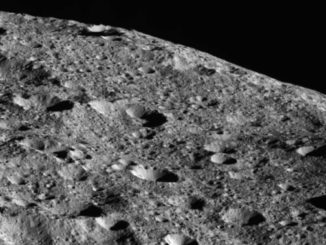
Occator Crater


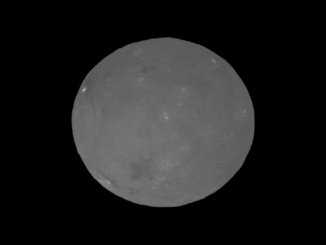
Movie shows Ceres at opposition from Sun
NASA’s Dawn spacecraft successfully observed Ceres at opposition on April 29, taking images from a position exactly between the Sun and Ceres’ surface. Mission specialists had carefully maneuvered Dawn into a special orbit so that the spacecraft could view Occator Crater, which contains the brightest area of Ceres, from this new perspective.
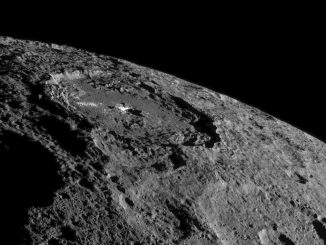
New views of dwarf planet Ceres as Dawn moves higher
The brightest area on Ceres stands out amid shadowy, cratered terrain in a dramatic new view from NASA’s Dawn spacecraft, taken as it looked off to the side of the dwarf planet. Dawn snapped this image from about 920 miles (1,480 kilometres) above Ceres in its fifth science orbit, in which the angle of the Sun was different from that in previous orbits.
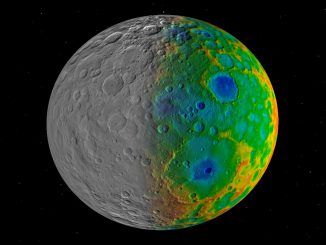
The case of the missing Ceres craters
Ceres is covered in countless small, young craters, but none are larger than 175 miles (280 kilometres) in diameter. To scientists, this is a huge mystery, given that the dwarf planet must have been hit by numerous large asteroids during its 4.5 billion-year lifetime. Where did all the large craters go?
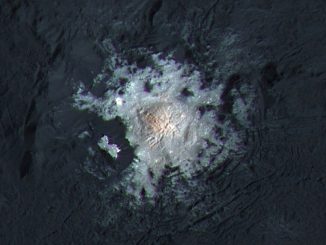
Recent hydrothermal activity may explain Ceres’ brightest area
The brightest area on Ceres, located in the mysterious Occator Crater, has the highest concentration of carbonate minerals ever seen outside Earth, according to a new study from scientists on NASA’s Dawn mission. The results suggest that liquid water may have existed beneath the surface of Ceres in recent geological time.
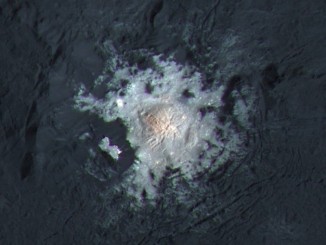

New details on Ceres seen in Dawn images
Features on dwarf planet Ceres that piqued the interest of scientists throughout 2015 stand out in exquisite detail in the latest images from NASA’s Dawn spacecraft, which recently reached its lowest-ever altitude at Ceres. Dawn took these images near its current altitude of 240 miles (385 kilometers) between 19 and 23 December 2015.
